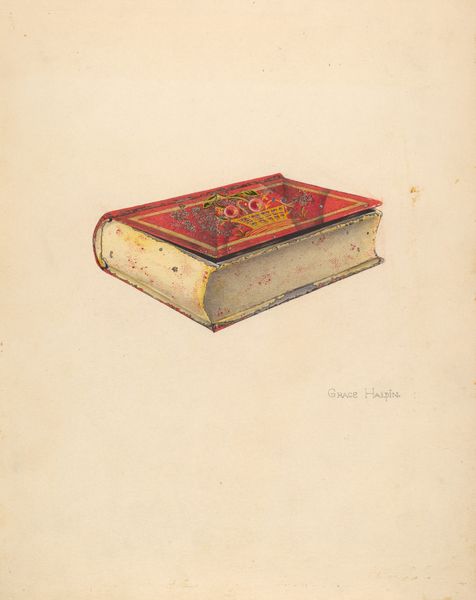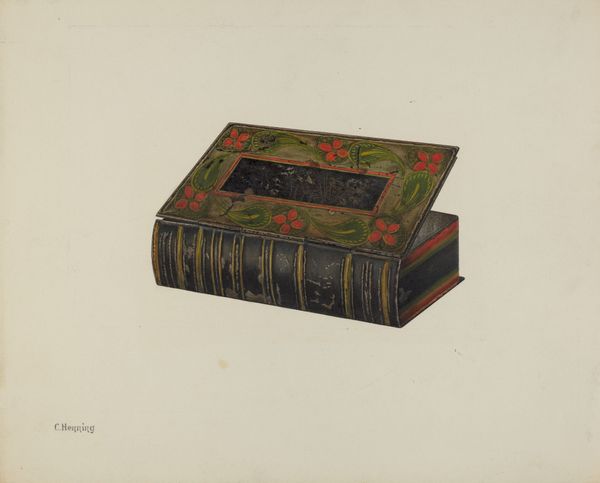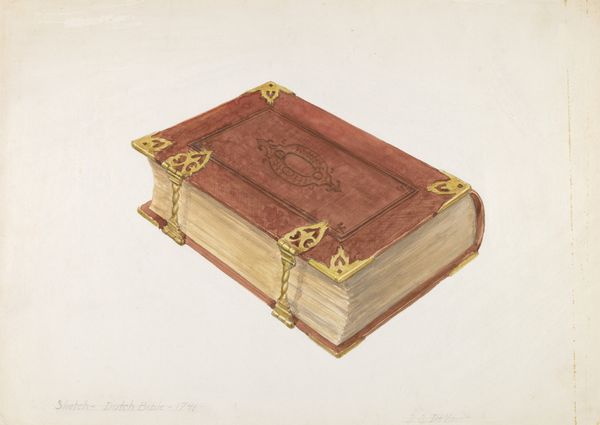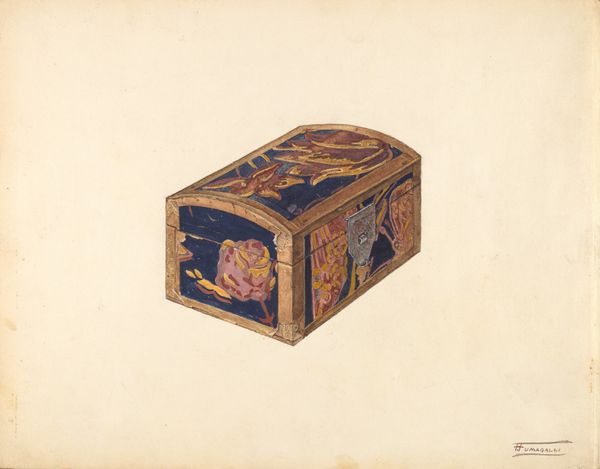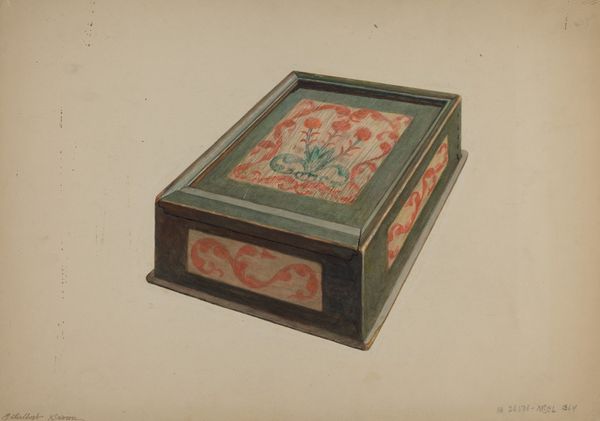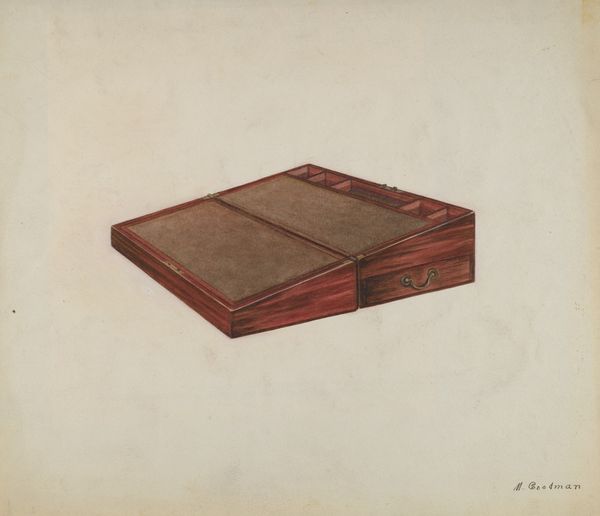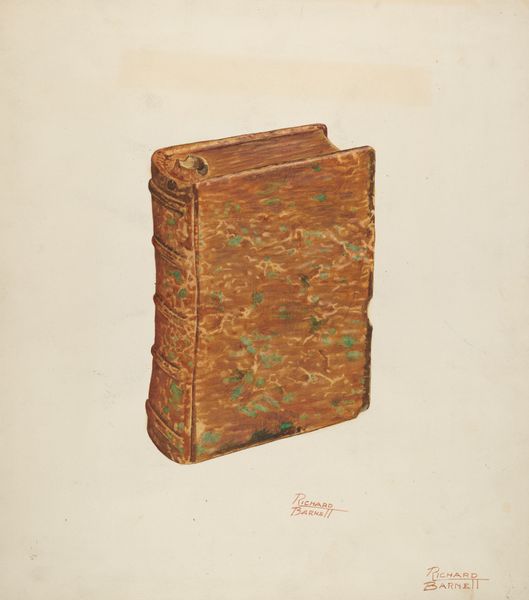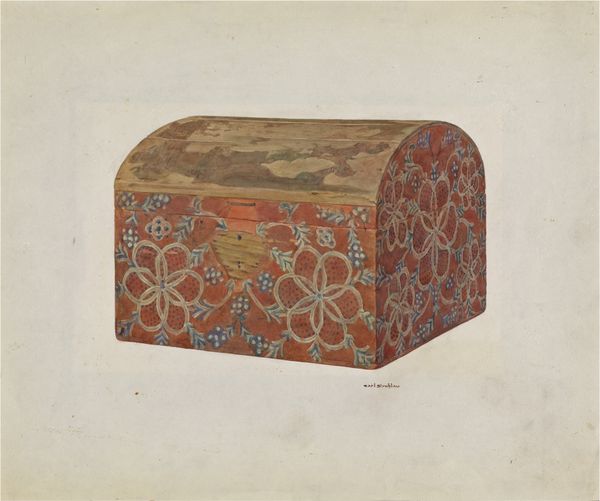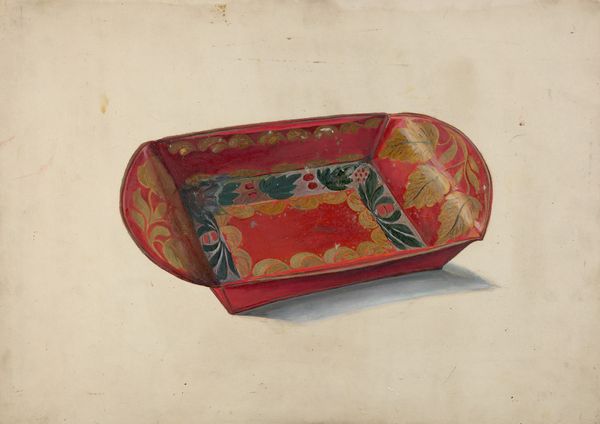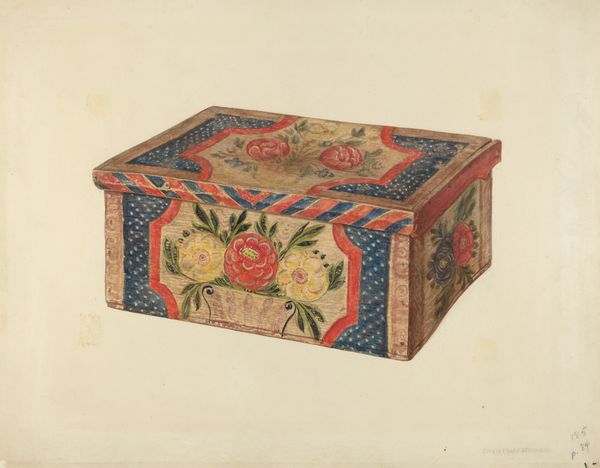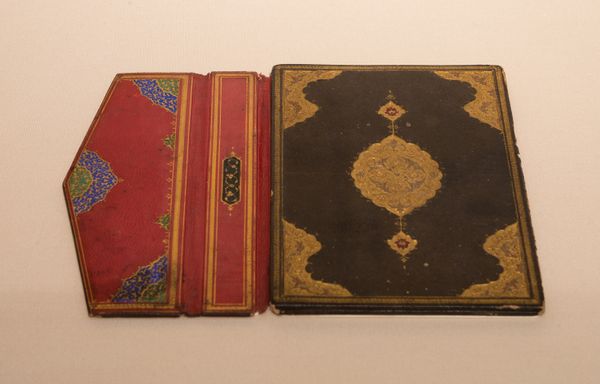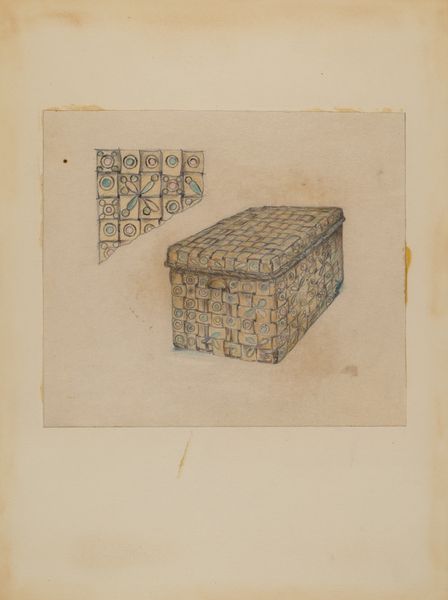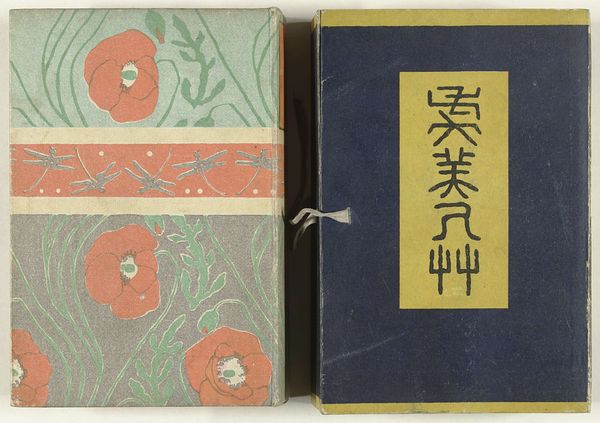
drawing, painting, watercolor
#
drawing
#
painting
#
watercolor
#
watercolor
#
realism
Dimensions: overall: 22.7 x 29.4 cm (8 15/16 x 11 9/16 in.) Original IAD Object: 3/4" high; 2" wide, 3" long
Copyright: National Gallery of Art: CC0 1.0
Curator: Editor: So, this is Grace Halpin’s *Painted Tin Trinket Box*, around 1939, done with watercolors and drawings. The juxtaposition of the two boxes creates a visual balance despite their size difference, but they appear so old... What strikes you about this work? Curator: Well, it makes me think about the process of its creation and the culture it embodies. This artwork blurs the lines between art and craft, wouldn't you say? Look closely, and one can appreciate not only its surface but also the means of its production, which speaks volumes. How might its context of labor influence our understanding of Halpin’s creation? Editor: The context of labor? Are you referring to *Halpin’s* labor, or the laborers that created the box? Curator: Both, of course. As we delve into Halpin’s painting, consider how it portrays these tin boxes and all the hidden labor embedded in a mass-produced object. Are they painted by machine, or hand? Where does craft intersect with industry in this case? And furthermore, how do these depictions comment on the value and role of domestic items in society, especially during the 1930s? Editor: So you're suggesting it’s not just about *what* is painted but *how* and *why*? About the labor, materiality and the hidden manufacturing in everyday items during the late depression era. Curator: Precisely! We should challenge traditional boundaries, especially ones between “high art” and mere decoration, to reveal these boxes and society in this historical moment. Editor: Thanks for your insights, I learned a lot about how materials shape artistic intention! Curator: My pleasure! Thinking critically about process and materials can unlock rich interpretations.
Comments
No comments
Be the first to comment and join the conversation on the ultimate creative platform.
